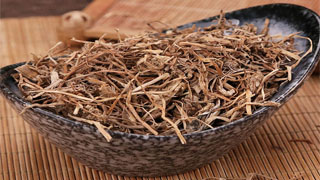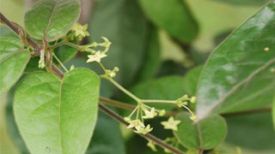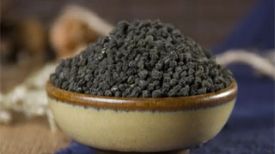
1. Alias
Glutinous rice roots, rice roots, glutinous rice roots, glutinous rice roots.
2. Plant morphology
Annual herb, about 1 meter tall. The stem is upright and cylindrical. The leaf sheath is of equal length to the internode, and the lower part is longer than the internode. The leaf tongue is membranous and harder, narrow and lanceolate, and extends downward on both sides of the base to combine with the edge of the leaf sheath. The leaf blade is flat and lanceolate, measuring 25-60 centimeters long and 5-15 millimeters wide, with obvious leaf ears when young. The inflorescence is loose, the glumes are often rough, the spikelets are oblong, usually brownish purple in color, the palea is degenerated into cone-shaped spines, and the fertile palea has 5 veins, covered with fine hairs, with or without awns, and the palea has 3 veins, covered with fine hairs; Scales 2, ovate in shape, stamens 6, styles 2, stigma broom like, extending from both sides of small flowers. Smooth grains. The grains are plump, slightly round, and have a relatively white color. The flowering and fruiting period is from July to August.
3. Origin distribution
It is cultivated in various regions of southern and central China.
4. Harvesting and processing
In summer and autumn, after harvesting glutinous rice, dig out the roots, stems, and fibrous roots, remove the remaining stems, wash them, and dry them in the sun.
5. Characteristics of medicinal herbs
This product is assembled into a loose mass, with separated residual stems at the upper end. It is cylindrical, hollow, and 2.5-6.5 centimeters long. It is covered with several layers of gray white or yellow white leaf sheaths, and the lower end is clustered with many fibrous roots. The fibrous root is slender and curved, with a diameter of 1 millimeter. The surface is yellow white to yellow brown, and the epidermis appears white after peeling off, with slight longitudinal wrinkles. Lightweight, soft in texture, with a slight odor and a mild taste.
6. Sexual Taste Returning to the Classics
Flat in nature, sweet in taste. Return to the lung meridian and kidney meridian.
7. Effect and Function
Nourish yin, eliminate heat, and stop sweating. Belonging to the category of astringent drugs, it is a type of antiperspirant that solidifies the surface.
8. Clinical application
Oral administration: decoction, 15-30 grams, large doses can be used 60-120 grams. Indications include Yin deficiency fever, spontaneous sweating, dry throat due to thirst, hepatitis, and filariasis.
9. Chemical composition
This product mainly contains various amino acids such as cysteine and histidine, as well as glucose, fructose, and kaempferol components.
10. Usage taboos
Not yet.
11. Compatibility prescription
① Treating Yin deficiency and night sweats: Take 60 grams of glutinous rice root and black jujube, 30 grams of brown sugar, and decoct in water. (Fujian Pharmaceutical Journal)
② Hepatitis treatment: 62 grams each of glutinous rice root and purple ginseng. Add sugar and fry in moderation. (Southern Medicine, Chinese Herbal Medicine)
③ Treating filariasis (chyluria): 250-500 grams of glutinous rice roots can be added with red dates. Boil it in water. (Southern Medicine, Chinese Herbal Medicine)
④ Treatment for nosebleeds: 30g glutinous rice root, 15g before water wheel. Boil it in water. (Fujian Pharmaceutical Journal)
⊙ The content of the article is for clinical reference only. Non TCM professionals are not allowed to test drugs.


